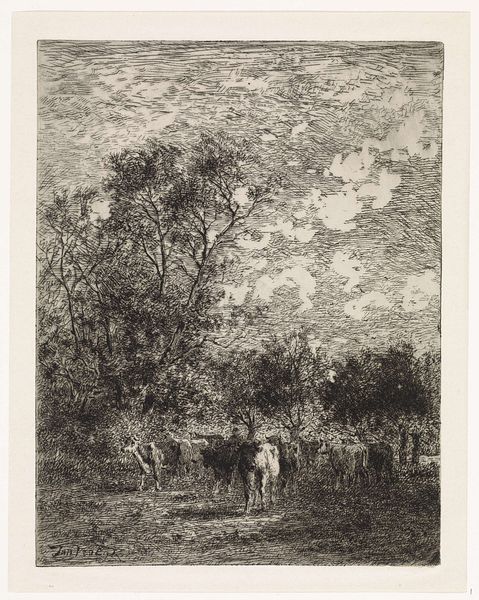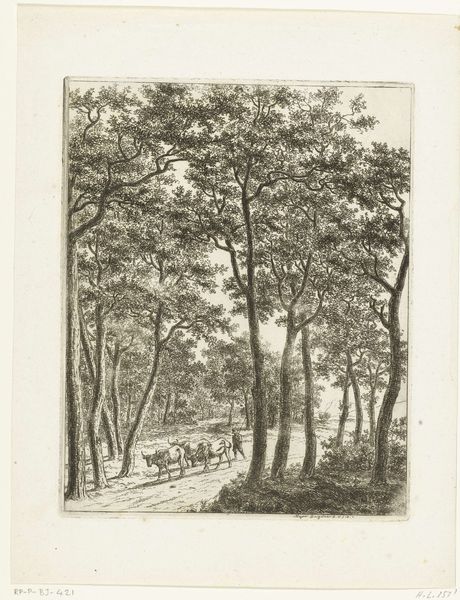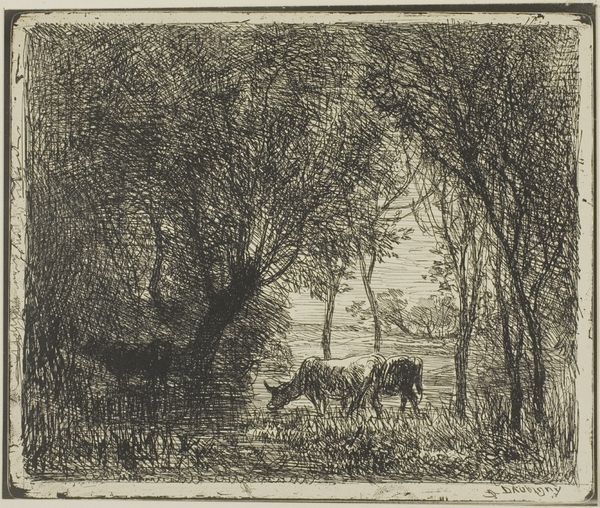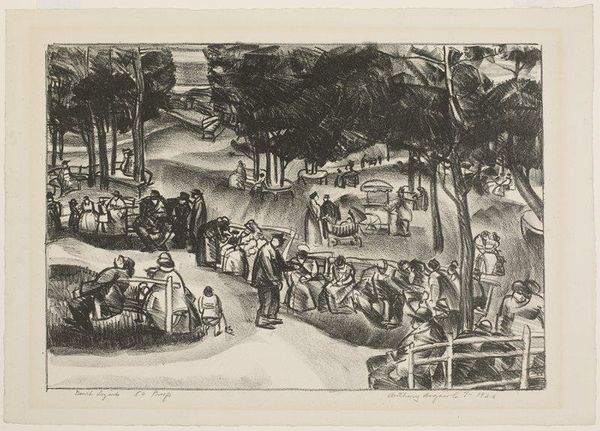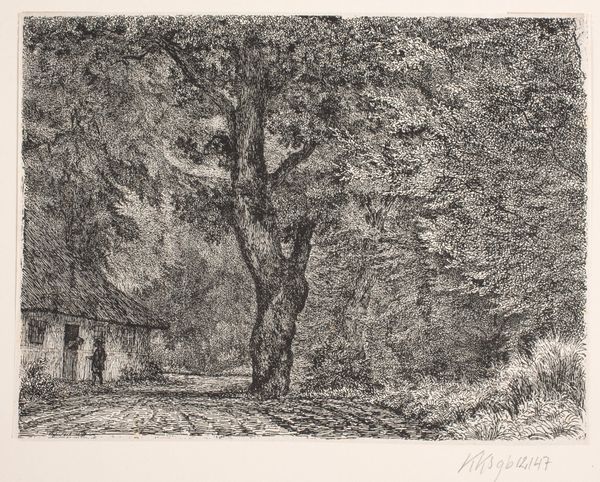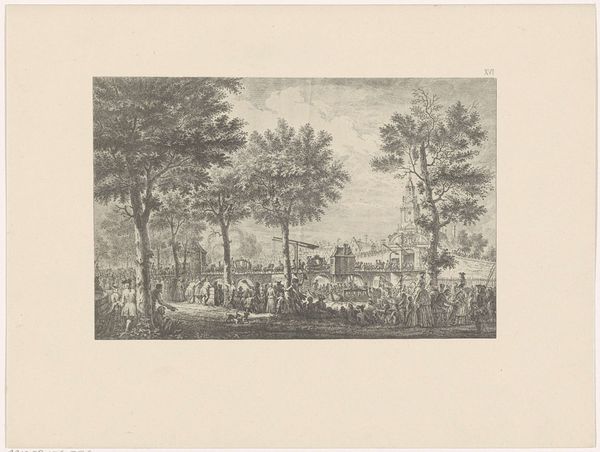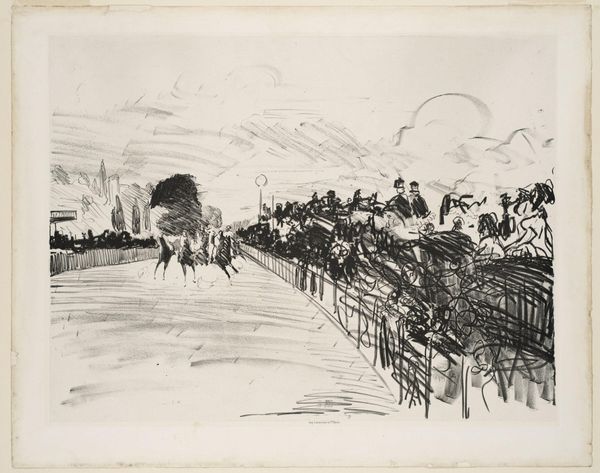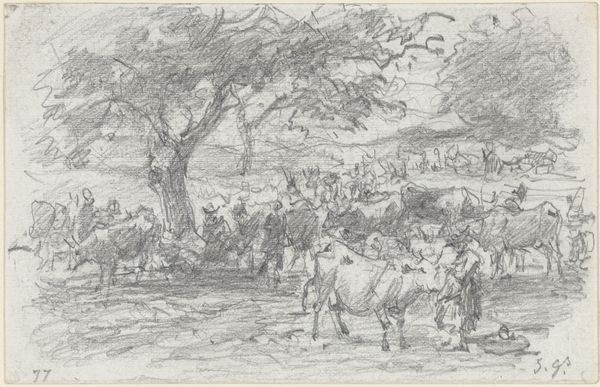
Dimensions: 194 × 254 mm
Copyright: Public Domain
Editor: We're looking at Joseph Pennell's "The Promenades of Madrid," a charcoal and ink drawing from around 1903, currently held at the Art Institute of Chicago. It strikes me as quite evocative; the light seems to filter beautifully through the trees, even though it's rendered in monochrome. What do you see in this piece from a formalist perspective? Curator: I observe a sophisticated manipulation of tonal values, creating depth and atmospheric perspective. Notice how Pennell employs varied densities of charcoal to articulate the spatial recession: darker, denser marks foreground the figures, while lighter washes suggest the hazy distance. What do you notice about the composition? Editor: The high concentration of detail in the foreground contrasting with the sketchier background definitely draws my eye in. Is the repetition of vertical tree trunks significant to your interpretation? Curator: Precisely. These vertical elements act as structural anchors, providing a rhythmic framework upon which Pennell builds the scene. Consider also the dynamic interplay between light and shadow. Does this contrast enhance your reading of the subject matter, irrespective of its cultural or social meaning? Editor: I hadn't considered that. Now I appreciate how the artist's choice to emphasize line and contrast brings a dynamic quality to the depicted leisure scene. This intense visual structure wasn't obvious on first viewing. Curator: Exactly, it’s in the very syntax of mark-making that meaning resides. Through understanding visual construction, we unravel how an artist presents meaning within a composition, transforming our experience with this print. Editor: I see your point. Concentrating on form first really unlocks an entire other level of meaning from this artwork! Thank you.
Comments
No comments
Be the first to comment and join the conversation on the ultimate creative platform.


